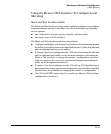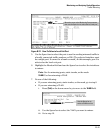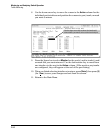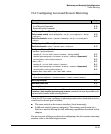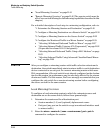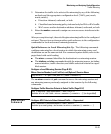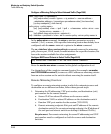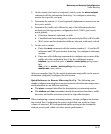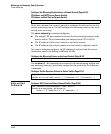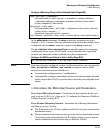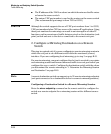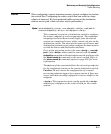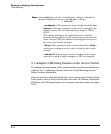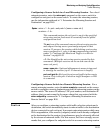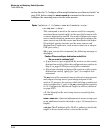
Monitoring and Analyzing Switch Operation
Traffic Mirroring
2. On the remote destination (endpoint) switch, enter the mirror endpoint
command with the information from step 1 to configure a mirroring
session for a specific exit port.
3. Determine the session (1 - 4) and (optional) alphanumeric name to use on
the source switch.
4. Determine the traffic to be filtered by any of the following selection
methods and the appropriate configuration level (VLAN, port, mesh,
trunk, global):
a. Direction: inbound, outbound, or both
b. Classifier-based mirroring policy: inbound only for IPv4 or IPv6 traffic
c. MAC source and/or destination address: inbound, outbound, or both
5. On the source switch:
a. Enter the mirror command with the session number (1 - 4) and the IP
addresses and UDP port number from step 1 to configure a mirroring
session.
b. Enter one of the following commands to configure one or more of the
traffic-selection methods in Step 4 for the configured session:
interface < port/trunk/mesh > < monitor | service-policy policy-name
in >
vlan < vid > < monitor | service-policy policy-name in >
monitor mac < mac-addr >
After you complete Step 5b, the switch begins mirroring traffic to the remote
destination (endpoint) configured for the session.
Quick Reference to Remote Mirroring Set-Up. The following com-
mands configure mirroring for a remote session in which the mirroring source
and destination are on different switches:
■ The mirror command identifies the destination in a mirroring session.
■ The interface and vlan commands identify the monitored interface, traffic
direction, and traffic-selection criteria for a specified session.
Caution When configuring a remote mirroring session, always configure the destina-
tion switch first. Configuring the source switch first can result in a large
volume of mirrored, IPv4-encapsulated traffic arriving at the destination
without an exit path, which can slow switch performance.
B-47



